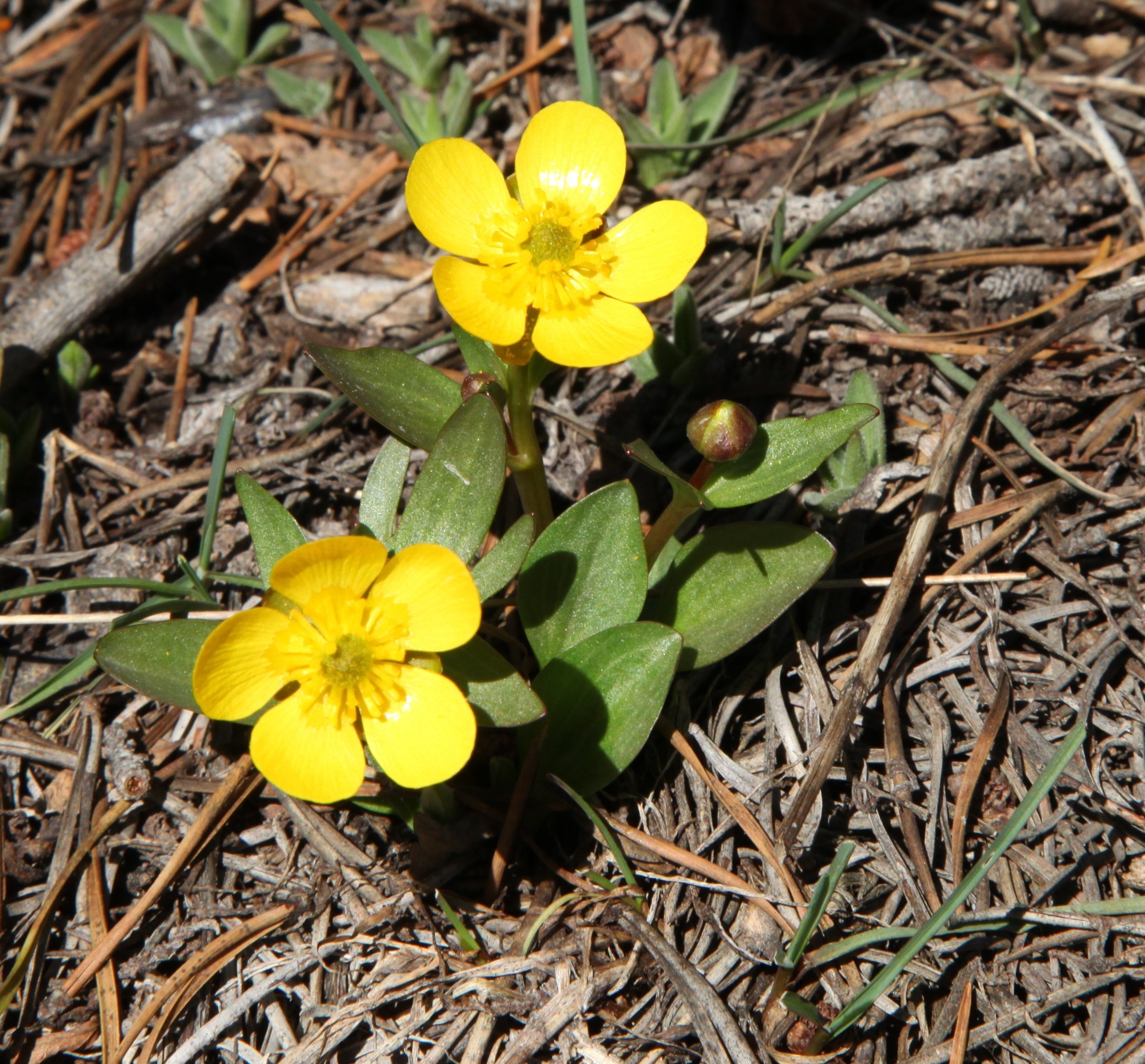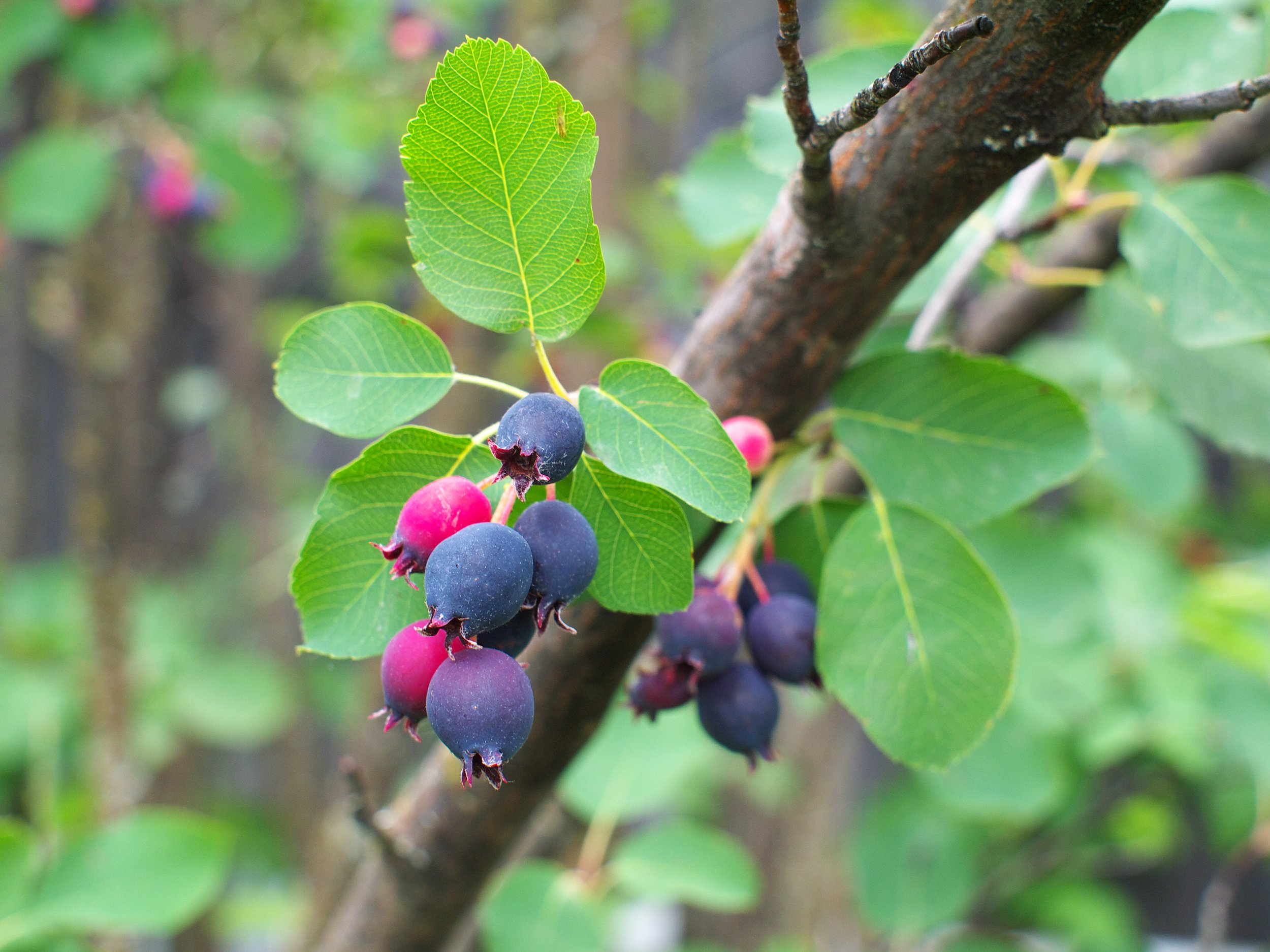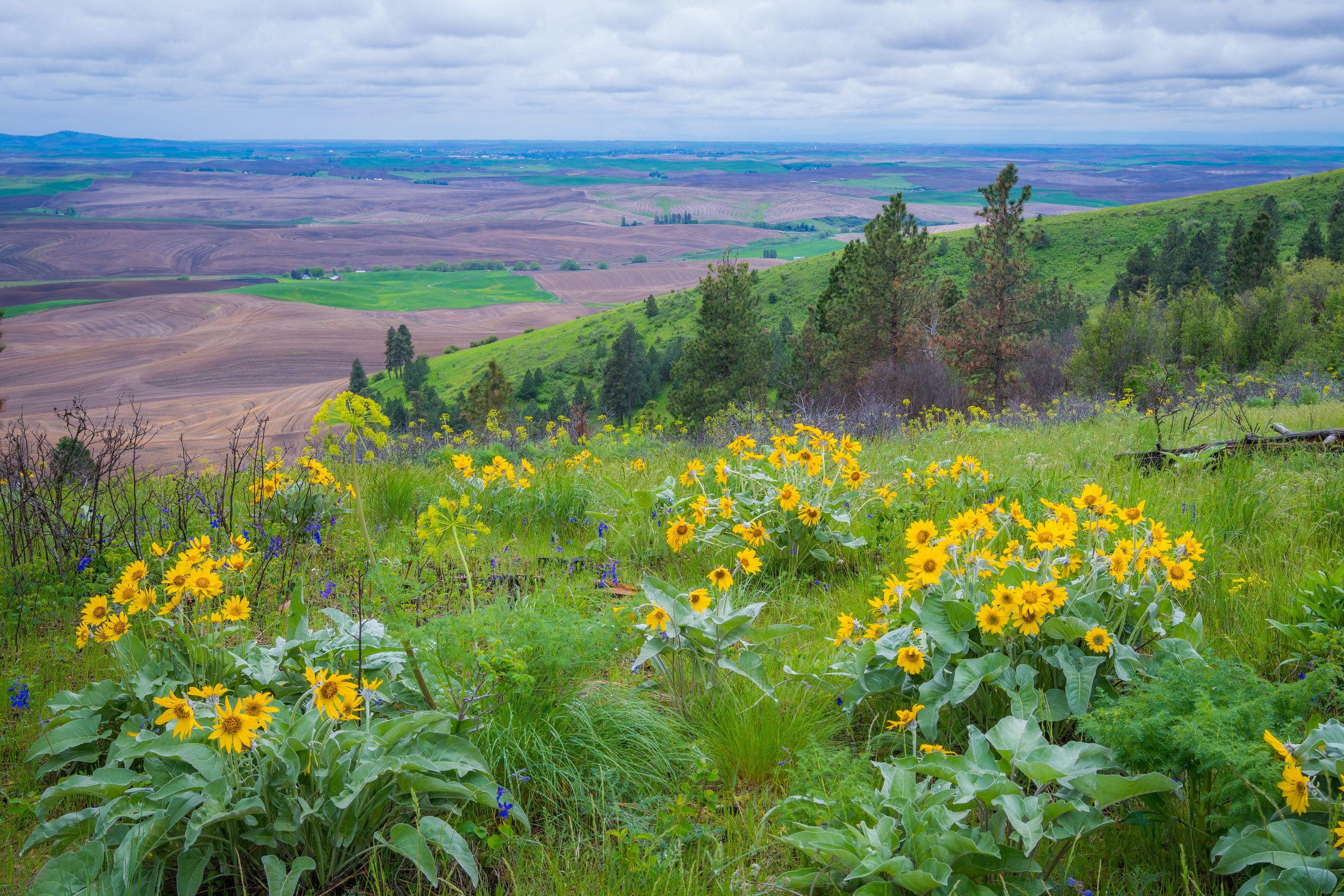Four Native Flowers of the Palouse and Where to Find Them
It is deeply satisfying learning the name of a new native plant. Once you can name a plant, you start to notice it everywhere, and that adds a whole new dimension to your time outdoors. You can start by looking for these four beauties around the Palouse.
1. Sagebrush buttercup (Ranunculus glaberrimus) This species of buttercup is one of the earliest bloomers on the Palouse - early enough that your hikes may still be muddy and cold when you see these pushing through the snow. Look for small bright yellow flowers, usually with five petals (sometimes up to ten), and with deeply lobed leaves at the very base of the plant. Most buttercups are wetland plants, but the Sagebrush buttercup grows in native grassland areas. So to find this gem, you will need to look to the grassy hills outside of wooded areas. You’ll be looking in the hills that aren’t being used for agriculture, so nature preserves like PCEI (Palouse Clearwater Environmental Institute) or Rose Creek Nature Preserve are ideal places to visit!
Sagebrush Buttercup
2. Trillium (Trillium spp.) This big white flower is a spring/early summer bloomer. Be on the lookout for three white petals above three leaves on a single stem. As the summer goes on, the petals fade to purple and drop off, so make an effort to find this early before it fades. This plant loves shade and water, so look in the heavily forested trails with water nearby. I most often find this plant in the lower flat areas of Idler’s Rest, or around creeks on higher Moscow Mountain trails. Also, resist the urge to pick this flower because it has a hard time growing back the next year if its single stem gets snapped.
Trillium
3. Serviceberry (Amelanchier alnifolia) Also called Saskatoon berry, this is a deciduous shrub with thin round oval leaves and smooth dark grey to reddish bark. The flowers are long, white and grow in clusters at the end of the branches. As the summer goes, these flowers develop into dull red/purple berries that you can eat! Make sure you have a positive ID before you taste. This shrub is scattered throughout any forested area around the Palouse, just look in well drained areas along the edges of forests, or in rocky thickets. Along the gravel roads that wind toward Moscow Mountain or Paradise Ridge are great places to forage, just be aware if you are on public or private land and get permission from a land owner before picking.
Serviceberry
4. Arrowleaf Balsamroot (Balsamorhiza sagittata) Balsamroot is in the sunflower family and has silvery gray/green leaves with soft hairs all over. Usually there is a bunch of leaves clustered at the base of the plant, with foot-tall yellow flowers shooting out on a tall leafless stalks. To find this flower, look for well drained, sunny and exposed slopes. Balsamroot is an important part of the view at Kamiak Butte. A short, steep hike up to the first clearing about a mile up will lead you to an exposed slope where (in the summer) you can’t miss these lovelies.
Arrowleaf Balsamroot
-Lizzy Engerbretson ,
Lizzy Engerbretson is mother, wife, homemaker and amateur nature enthusiast. She graduated from University of Idaho with a B.S. in Horticulture in 2015 and has spent the years since obsessing about gardening, botany and native flora and fauna. She loves getting outside to hike or ski, but equally loves being completely sedentary with a good novel or knitting project.



